This post may contain affiliate links. Please read my privacy policy.
Savor the heavenly taste of malasadas—sweet, light, and fluffy Portuguese doughnuts. This easy, fail-proof recipe mirrors the deliciousness of Leonard's Bakery in Hawaii! With each bite, savor the irresistible sweetness and airy texture, transporting you to the sun-kissed shores of Oahu.
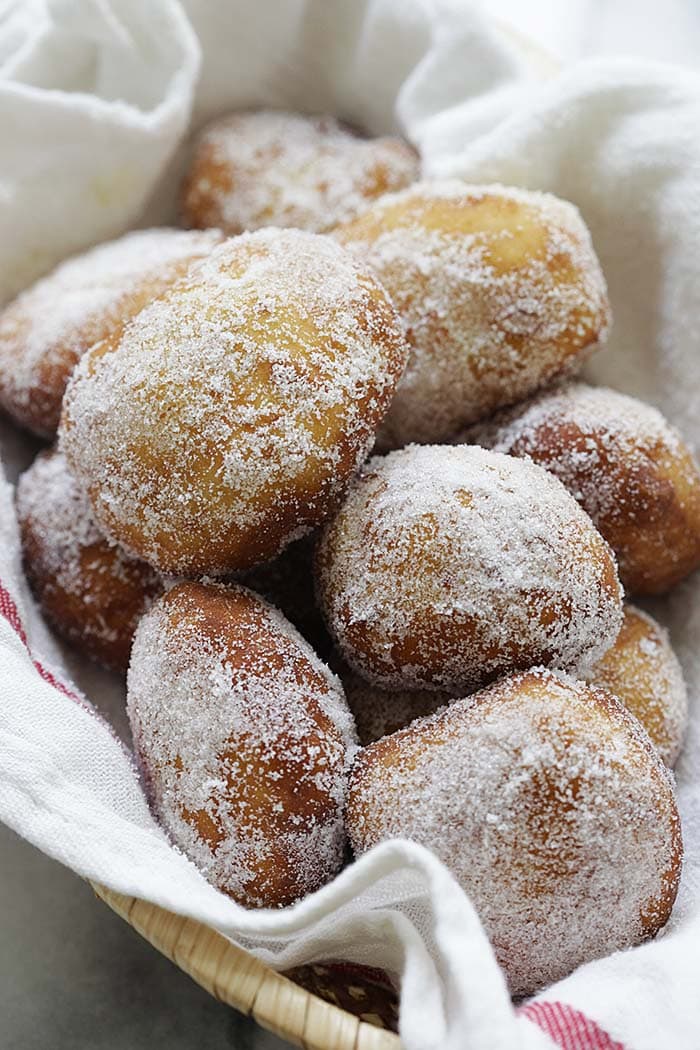
What Is Malasadas
Malasadas are delicious Portuguese-style doughnuts beloved in Hawaii. They’re fluffy, fried, and coated in sugar, sometimes filled with creamy delights like custard or fruit.
Found in bakeries and food trucks across the islands, they’re a favorite treat for locals and tourists alike, offering a taste of Hawaiian sweetness and tradition.
Leonard’s Bakery Copycat Recipe
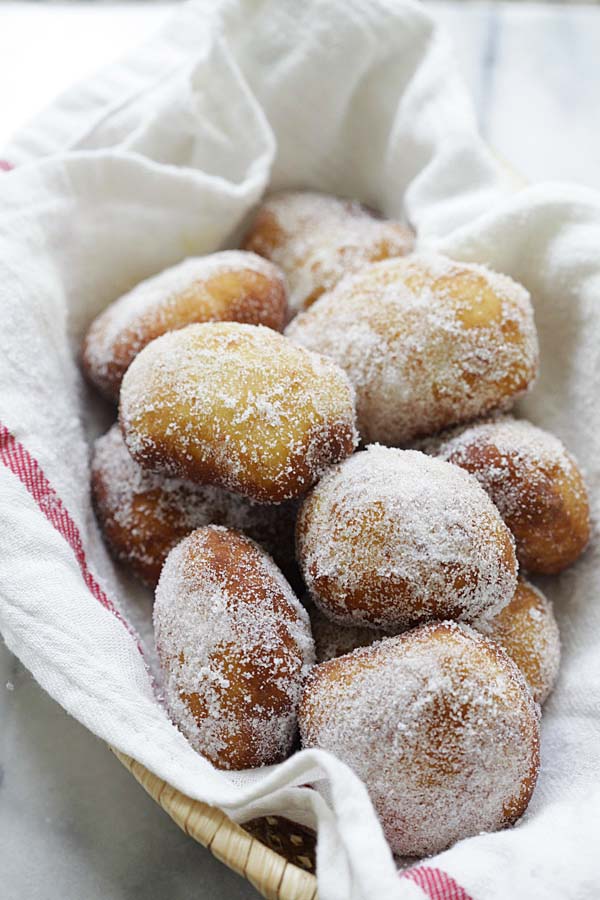
If you’ve been to Hawaii, you’ve probably tasted Leonard’s Bakery’s famous Malasadas on Oahu. Trying them is a must-do in Hawaii, and once you’ve had a taste, you’ll find yourself craving them constantly, just like me.
Indulge in the irresistible delight of soft, fluffy, and sweet Malasadas with this fail-proof recipe inspired by Leonard’s Bakery. You won’t be able to resist these pillowy treats that are so easy to make.
My baker friend Kendoll and I decided to try the recipe from My Pinterventures, which is the easiest malasadas recipe ever! It’s very straightforward and doesn’t take long. The active time is pretty short, and the proofing time is about one hour.
These malasadas are like a taste of Leonard’s Bakery in every bite. They’re so satisfying! Give this easy recipe a go—I promise it won’t let you down!
Origin Of Hawaiian Malasadas
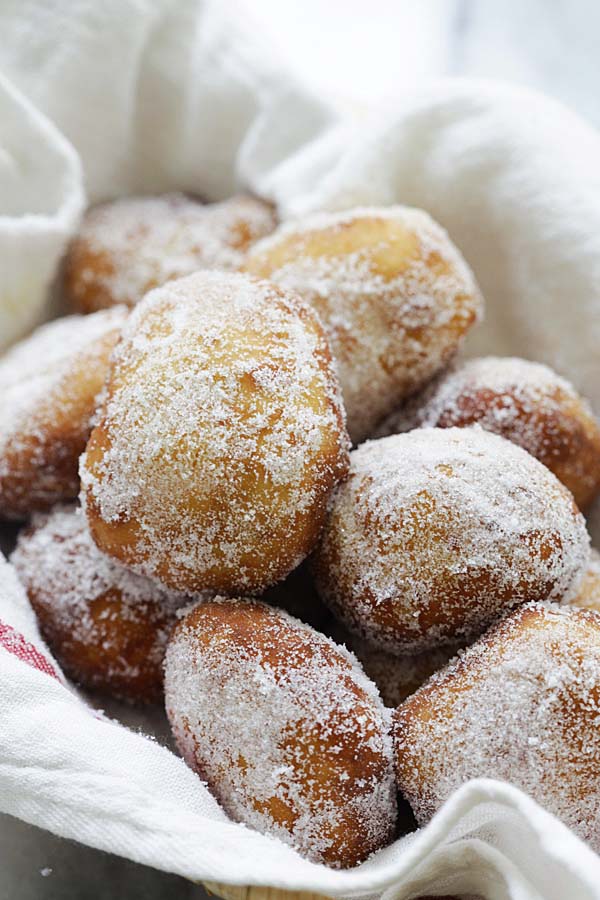
Malasadas originated in Portugal and were brought to Hawaii by Portuguese immigrants in the late 19th and early 20th centuries. Oahu’s malasadas, including those from Leonard’s Bakery, reflect this heritage and have become an iconic treat on the island.
Difference Between Malasadas And Beignet
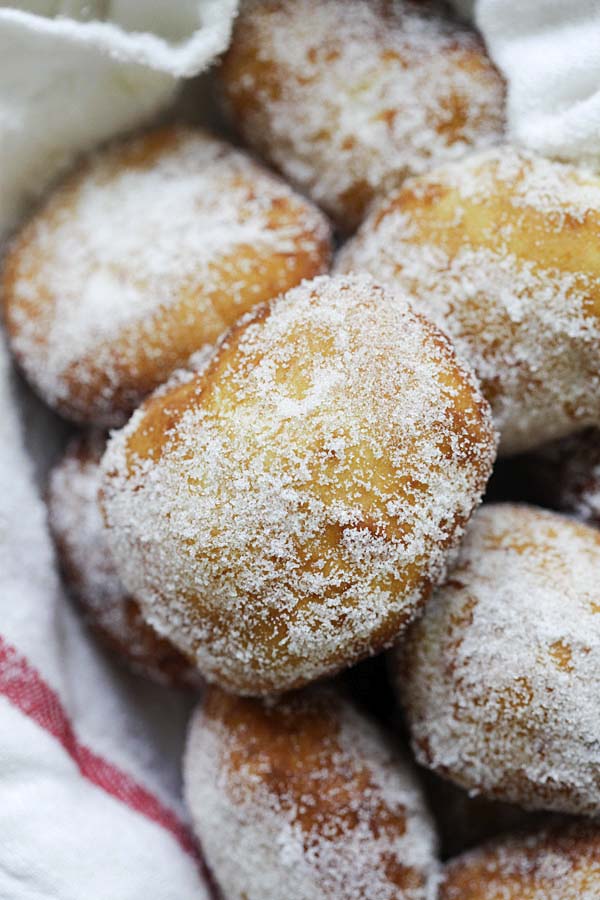
Malasadas and beignets are both fried dough treats, but they come from different backgrounds. Malasadas have Portuguese roots and are round and fluffy, often filled or dusted with sugar.
Beignets, originating from French cuisine, are square, denser, and typically served with powdered sugar. While both are delicious, they have distinct flavors and textures shaped by their cultural origins.
Malasadas: Portuguese-style fried dough, round and fluffy, often filled or dusted with sugar. Beignets: French-style fried dough, square-shaped, denser, usually served with powdered sugar, for example: New Orleans Beignets.
Frequently Asked Questions
Canola oil is the best oil for deep frying due to its neutral flavor, high smoke point (around 400°F or 204°C). It is also low in saturated fat content. I also like soybean oil, which has a neutral flavor and a high smoke point (around 450°F or 232°C).
This easy Malasadas recipe is only 238 calories per piece.
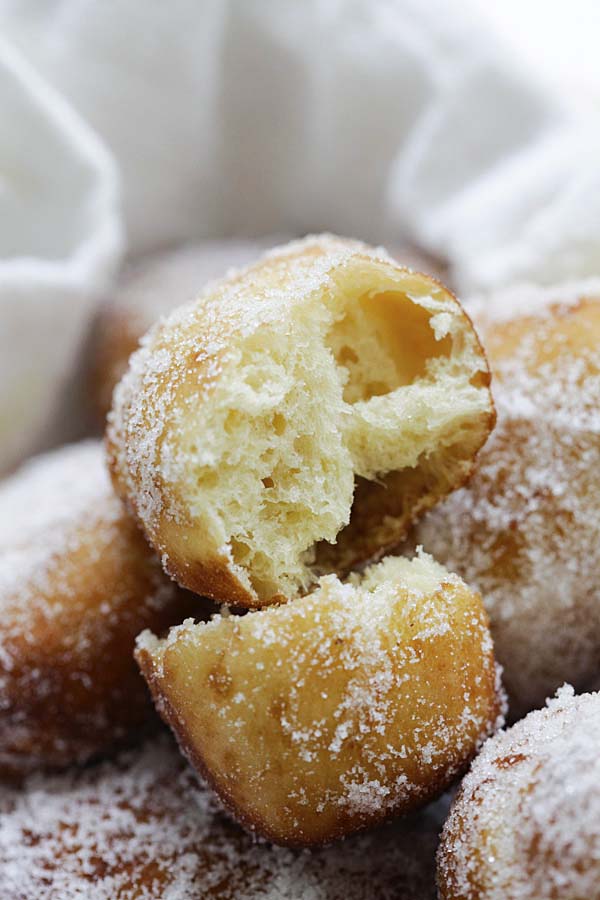
What To Serve With Malasadas
This sweet treat is best served with a cup of coffee or tea. For an afternoon tea party, I recommend the following recipes.
I hope you enjoy this post as much as I do. If you try my recipe, please leave a comment and consider giving it a 5-star rating. For more easy and delicious recipes, explore my Recipe Index, and stay updated by subscribing to my newsletter and following me on Facebook, Pinterest, and Instagram for new updates.
Other Recipes You Might Like
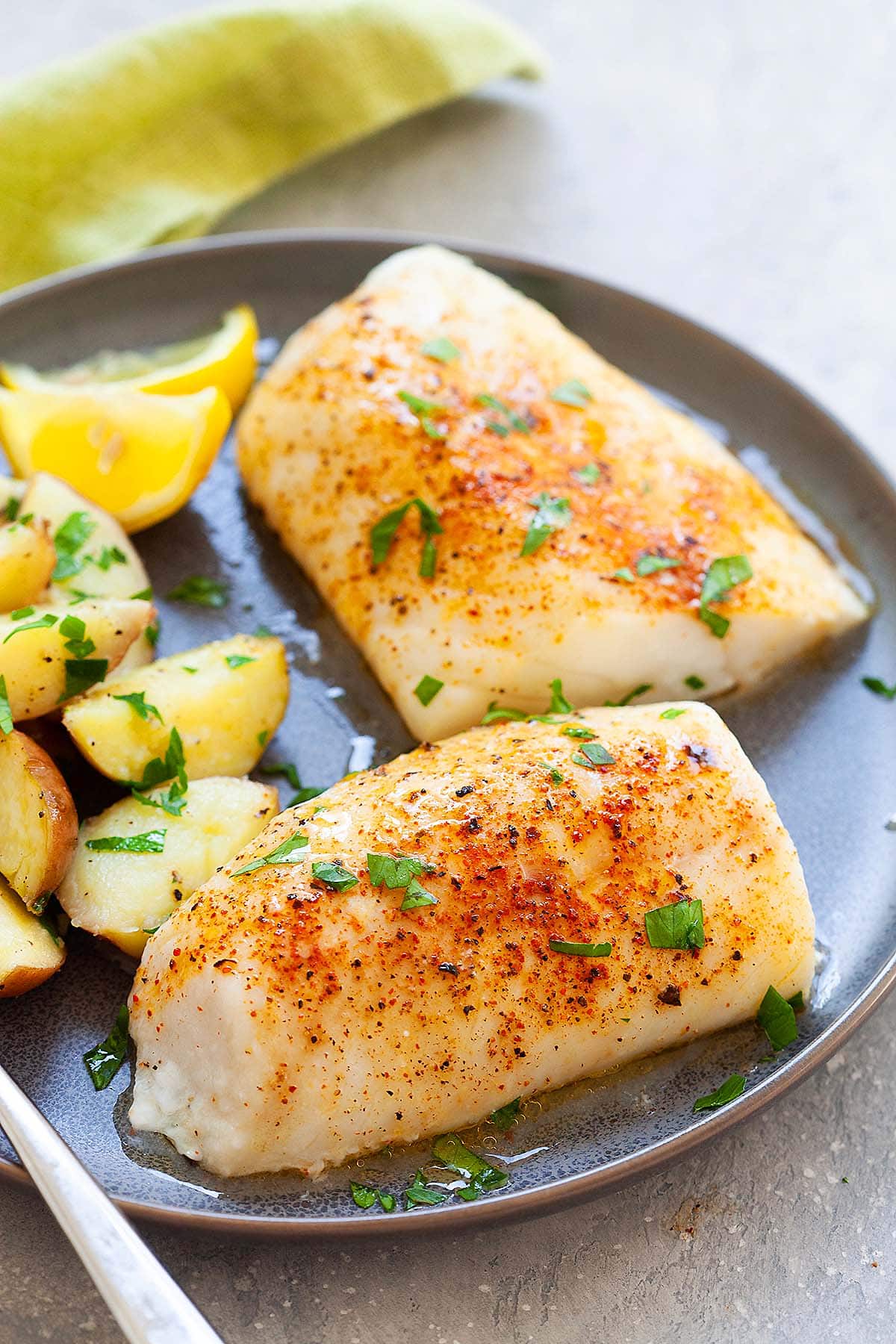
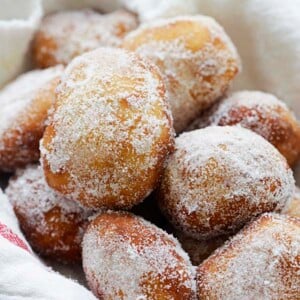
Malasadas (The Best Recipe)
Ingredients
- 1 packet active dry yeast, 1/4 oz. (5mm) or 2 1/4 teaspoons or 7 g)
- 1 tablespoon sugar
- 1/3 cup water
- 8 cups all-purpose flour
- 1/2 cup sugar
- 1 teaspoon salt
- 2 cups scalded milk
- 1/2 cup butter, melted
- 8 large eggs, beaten
- oil , for frying
- sugar, for coating
Instructions
- Dissolve the yeast and 1 tablespoon of sugar in warm water. In a large mixing bowl, combine the all-purpose flour, sugar, and salt, then make a well in the center. Add the milk, butter, eggs, and yeast mixture into the well.
- Beat thoroughly to form a soft and smooth dough. Cover and let rise until doubled in size, about 1 hour. Heat oil to 350°F (176°C).
- While the oil is heating up, shape the dough into flat round discs, pulling the dough outward and leaving a small indentation in the center.
- Place the dough into the oil and fry until browned. Drain on paper towels, then shake in a bag with sugar.
Video
Notes
Nutrition
Nutrition information is automatically calculated, so should only be used as an approximation.
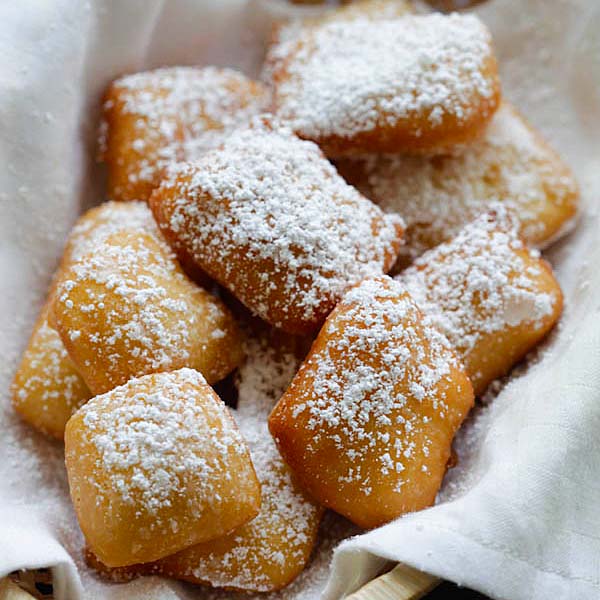
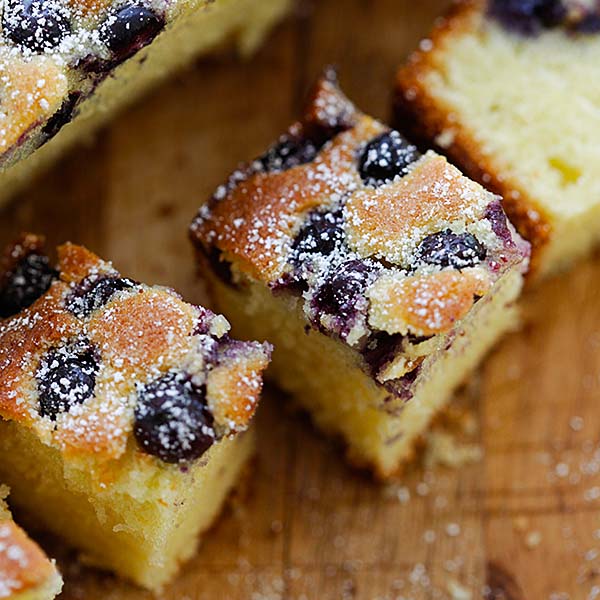
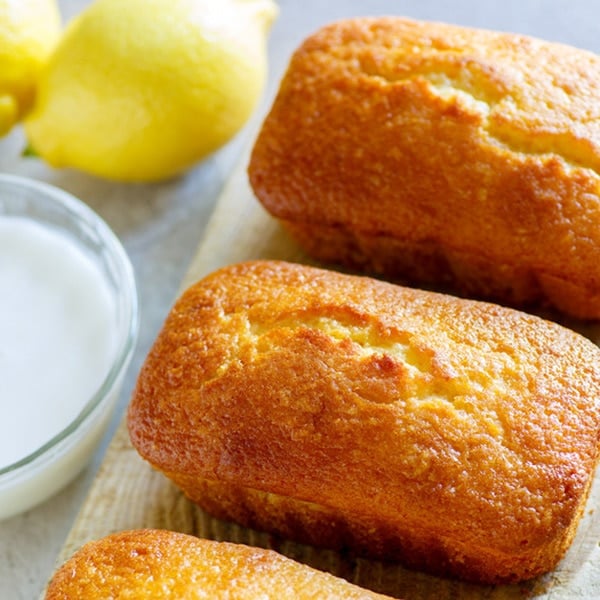
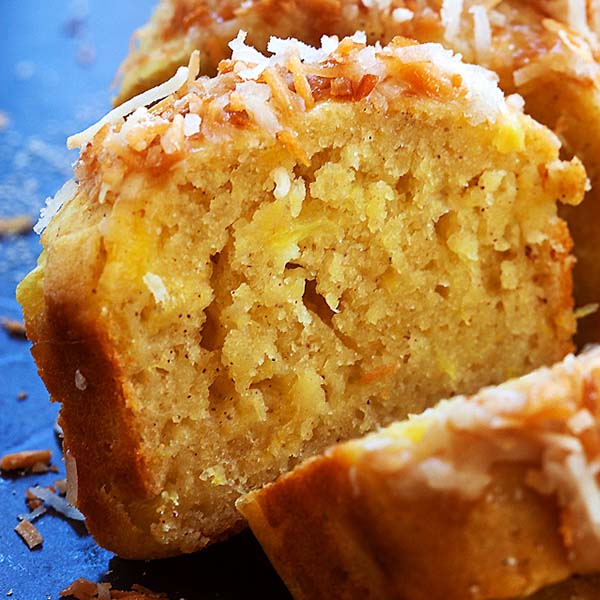






Hi,
Can I bake instate of fry?
Thanks in advance.
I don’t think you can bake. This should be fried.
I tried baking. Frying was much better.
Remove the sugar and now we can have this with bak kut teh, hehehe.
LOL, sure, why not?
Would it worked if these were baked? Temperature?
Hi Julie, I don’t think so. This malasadas recipe is for deep-frying.
Do we have to rest the yeast ? If so how long ?
Bea; my mother used to make these and called them donut ball’s she also rolled them in brown sugar, as well as confectioner’s sugar and cinnamon sugar.Thanks for the recipe. I miss these as a desert.
Hi Matthew, yeah, malasadas are basically donut balls. Your mom’s version sounds very yummy!
Hi Bee can j do the dough in a sort of flat oval or round
Sure!
Love Malasadas, enjoyed them all my life starting around 1955.
Thanks for the recipe.
Thanks Doug. The BEST fried dough ever!
I love, love,love these! My FAVE is the cream filled ones. Would you happen to know what kind of cream filling Leonard’s uses to fill them? Anyhow, thank you for posting this and first chance I get I am going to make a batch.
Love your website. Alaina
Hi Alaina, thanks so much for your sweet comment. I think it’s a sweet vanilla custard filling. :)
Alaina Mantel:
If the cream filling tastes a tad like coconut, then it’s “Haupia” (My favorite!).
Sometimes… I’ll order it “unfilled”… simply sprinkled with cinnamon-sugar.
I think the indentation helps to cook the centre as the centre might otherwise be half cooked if it’s too thick as the centre takes the longest to cook.
Thanks for explaining, I have no idea, lol.
Hi Bee,
I don’t quite understand the small indentation in the center of the dough (no picture on the page). What is the purpose of indentation? Kindly advise
I have added the picture. We just followed the recipe source, I guess that indentation keeps the malasadas in shape? I am not entirely sure.
Para facilitar o cozimento deixa na forma achatada.
The indentation is for even cooking otherwise it will puff in the middle and take longer to fry making the outside edge overdone or the middle gooey if undercooked
Thanks for letting me know!
The indentation is to make sure the dough gets done on the inside or it might be raw.
Thanks for explaining.
The traditional malassadas were formed using our knee. Women would sit on a low chair in front of the fire and would form the malassadas using one hand and rolling them on their knee. Hence the indentation.
It is to prevent the Malasadas from being raw in the middle because the gear of the oil would have to go through a lot of dough to thoroughly cook the middle of there were no indentation.
Where’s the “Get recipe”? It says to click for the recipe index instead.
I have changed my format, the recipe is at the bottom of the page.
Hi, your site is wonderful! I think the recipes are too difficult to find now, however, it is counter-intuitive tohave to scroll through all of the other pictures and recipes to actually come to the one we are interested in.
Please consider going back to your previous, clearer format! I value your posts so much–best wishes
The recipe is at the bottom of the page. We are changing format to put the recipe on the bottom of the page.